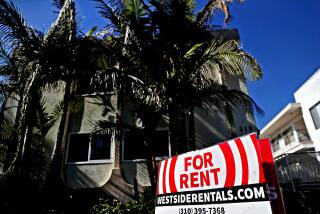Limits on Fannie Mae, Freddie Mac loans raised to nearly $1 million in some markets
- Share via
The Federal Housing Finance Agency announced an increase in loan limits Tuesday that will allow mortgage giants Fannie Mae and Freddie Mac to back loans of nearly $1 million in some of the most expensive U.S. housing markets.
Reflecting the surge in home prices during the COVID-19 pandemic, Fannie and Freddie will be able to buy loans of $970,800 in areas including San Francisco, Los Angeles and New York, the agency announced Tuesday. The increased loan limits apply to single-family residences.
COVID-19 unleashed new demand for homes, made the well-off wealthier, and fueled extreme bidding wars. The result? The $1-million home is everywhere.
Fannie and Freddie don’t make mortgages. They buy them from lenders, wrap them into securities and guarantee repayment of principal and interest to investors. The federal government took control of the companies during the 2008 financial crisis and bailed them out as mortgage defaults mounted.
In other parts of the country, loan limits will increase to $647,200 next year from $548,250 in 2021, the FHFA said. The changes are aimed at making it more affordable for Americans to purchase homes.
The pandemic has sparked fierce competition for properties as Americans seek more space to live and work. Record-low mortgage rates have also fueled the real estate frenzy. More owners are expected to list their properties for sale in the coming months, which would help ease the inventory shortage. But demand remains intense.
Do you live among million-dollar homes? These 15 L.A. neighborhoods crossed the $1-million threshold
A measure of home prices in 20 U.S. cities jumped 19.1% in September, the S&P CoreLogic Case-Shiller index showed Tuesday. Nationwide, prices climbed 19.5%, the data show.
More to Read
Inside the business of entertainment
The Wide Shot brings you news, analysis and insights on everything from streaming wars to production — and what it all means for the future.
You may occasionally receive promotional content from the Los Angeles Times.









